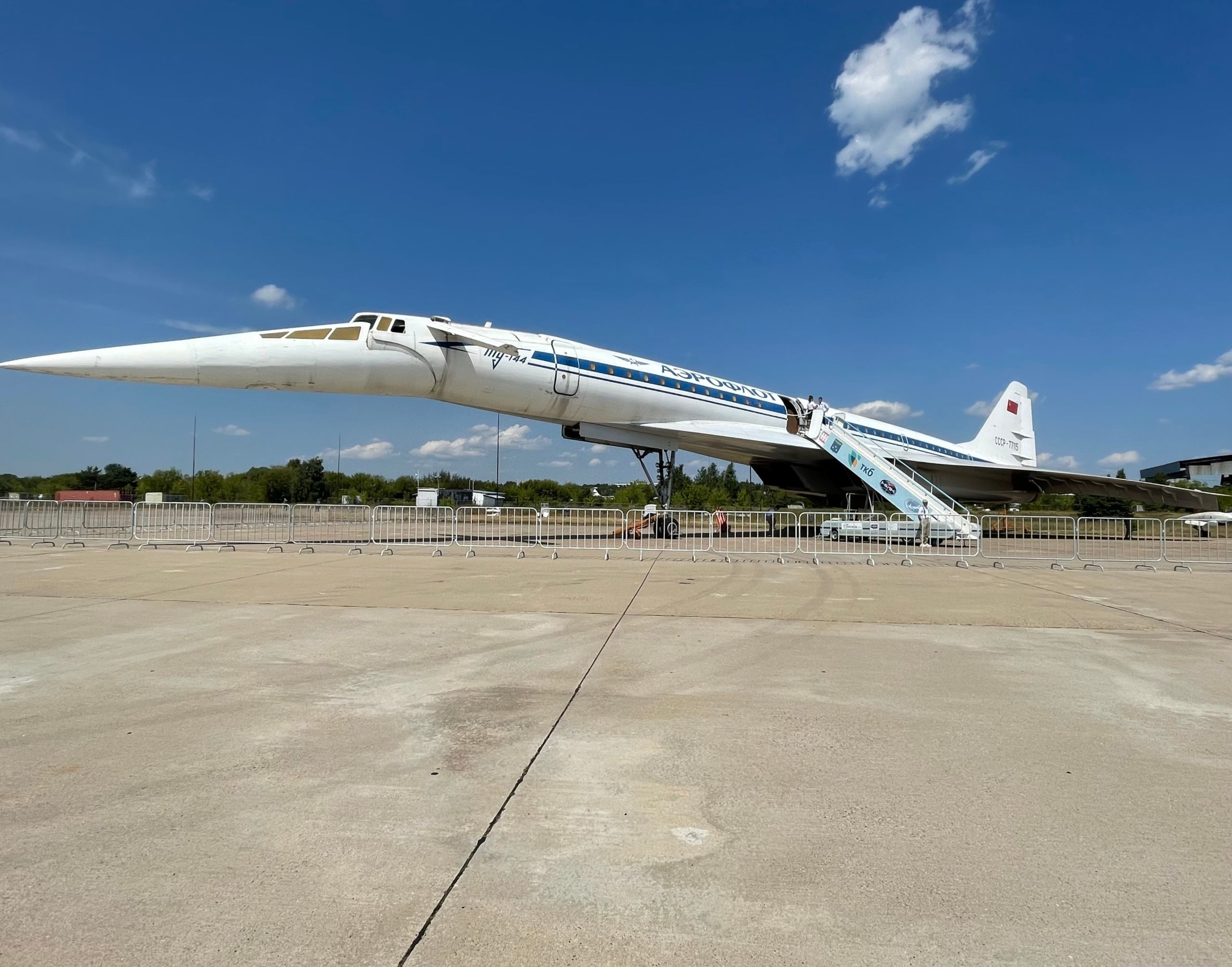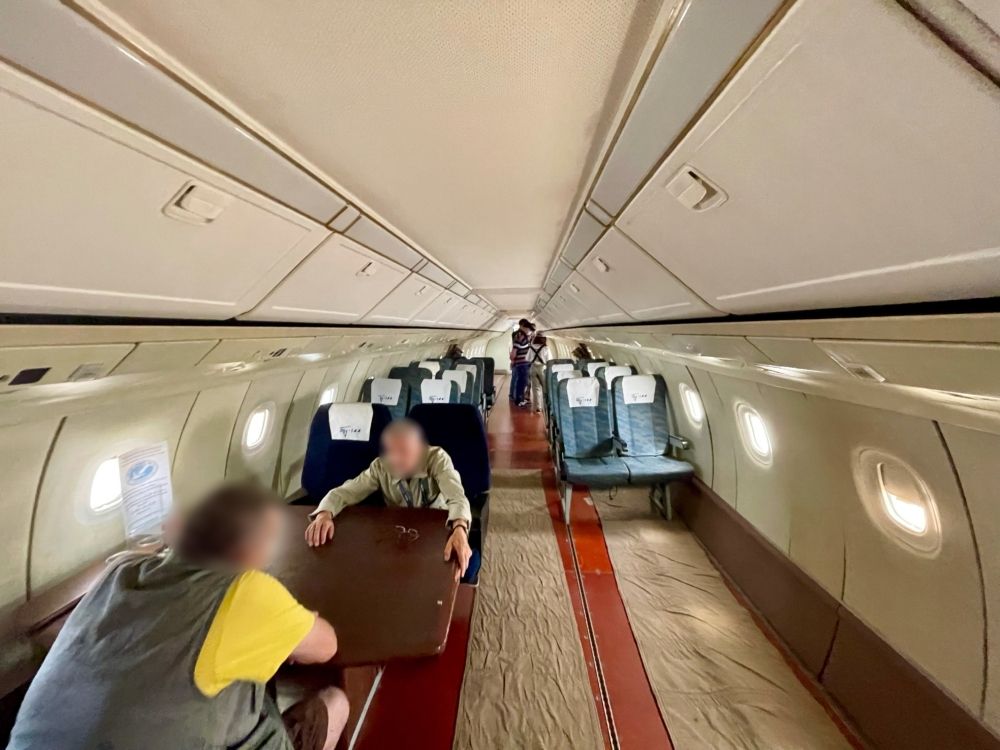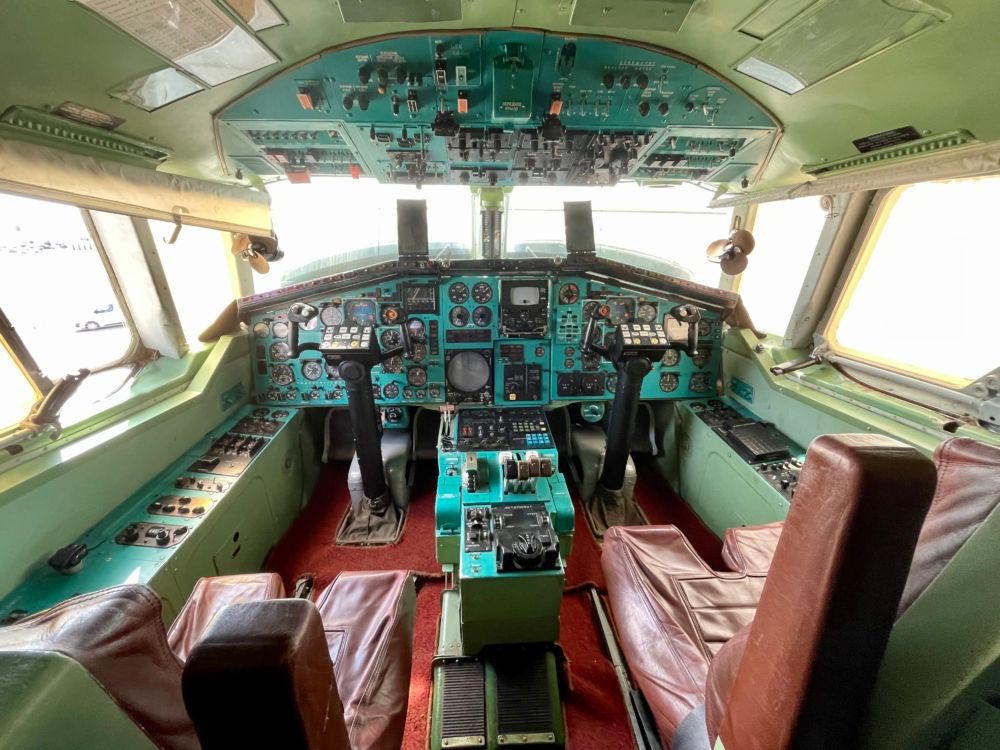It has been over five decades since the Tupolev Tu-144 first took to the skies. The Soviet production would go on to break the sound barrier the following summer and become the first commercial plane to go supersonic.
Inside the aircraft
The aircraft conducted its first flight on December 31st, 1968, which was notably two months before its Anglo-French rival, Concorde. The jet took off from Zhukovsky Airport to make history. I personally had the pleasure of visiting this site and tour inside a Tu-144 unit this year.
The plane has a length of 65.7 m (215 ft 7 in), a height of 12.55 m (41 ft 2 in), and a wingspan of 28.8 m. I noticed plenty of room for movement within the cabin and many Soviet-era furnishings and patterns across the interior.
The flight deck was designed with the ergonomic requirements of the period in mind. A pair of seats were fitted at the front for the pilot and co-pilot while the flight engineer’s seat was placed behind. In the first prototype, a fourth seat was designed for an engineer.
Off the ground
By the end of 1968, the Tu-144 was ready to hit the air for the first time. Those behind the program were undoubtedly keen to beat the Concorde program’s ambitions.
“The crew was headed by the honored test pilot of the Tupolev Design Bureau Eduard Elyan. Due to the unusual nature of the vehicle, for the greater safety of the crew, ejection seats were installed in the cockpit, for the first time in an experimental passenger aircraft,” Rostec, the conglomerate behind Russia’s aviation industry, shares.
“Since mid-December, the Tu-144 was in prelaunch readiness, but bad weather prevented it from taking off. And only on the last day of 1968 the plane "slipped" into the meteorological window and was able to take off. Within 25 seconds after the announcement of the start, the Tu-144 took off from the runway. The first flight lasted 37 minutes.”
Stay informed: Sign up for our daily and weekly aviation news digests.
In service
Only one regular passenger route saw the Tu-144. The jet hopped between the Soviet cities of Moscow and Almaty when in commercial service. This operation was only a 1,700 NM (3,148 km) trip across the union.
Despite being the first to the post, the Tu-144’s life was significantly shorter than its supersonic competitor. Concorde was commercially active for 27 years, but the Tu-144 only flew for a few years after entering service with Aeroflot on December 26th, 1975.
Inferior engine control and aerodynamics created a slippery slope for the Tu-144 program. Passengers complained of a loud and uncomfortable experience, which disrupted the overall journey. Additionally, a series of accidents, including an infamous crash at the 1973 Paris Air Show, plagued the launch of the aircraft. As a result of these incidents, Aeroflot grounded all of its units in 1978, just a year after introducing the type.
There may be another chance for Russian supersonic travel. UAC, which operates under Rostec, recently joined forces with Mubadala, a UAE-owned investment firm. The pair are looking to develop a supersonic passenger aircraft from scratch. So, we can expect another era of supersonic travel in the region in the coming years.
What are your thoughts about the Tu-144? What do you make of the prospects of supersonic travel in this next chapter? Let us know what you think in the comment section.



